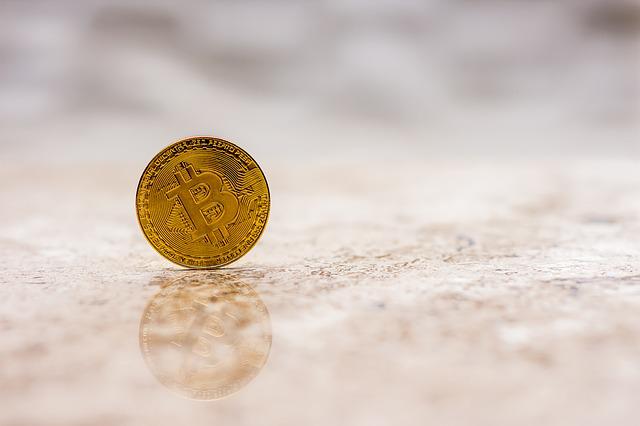Are Cryptocurrency Rewards Credit Cards A Good Idea? – Bankrate.com
Traditionally, credit card rewards have come in three forms: points, miles or cash back. Cryptocurrency is now a rewards currency, too, thanks to the launch of several new credit cards. The process is fairly simple and works similarly to a traditional cash back program. You earn a percentage of your purchases back in U.S. dollars, which is then used to buy crypto (usually automatically).
…….

Traditionally, credit card rewards have come in three forms: points, miles or cash back. Cryptocurrency is now a rewards currency, too, thanks to the launch of several new credit cards. The process is fairly simple and works similarly to a traditional cash back program. You earn a percentage of your purchases back in U.S. dollars, which is then used to buy crypto (usually automatically).
One major appeal of this type of credit card is that you can buy crypto — a notoriously risky venture — without spending money out of your paycheck. Like any cash back card, you do have to spend money to earn the rewards. But if it’s money you’d be spending anyway, the crypto you earn is “free.”
Not everyone sees it that way, however.
“I would urge against departmentalizing into ‘hard-earned’ money and reward money,” says Russell Wild, financial advisor and author of “Bond Investing for Dummies” and “Exchange-Traded Funds for Dummies.” “In the end, $10 is $10. Crypto, which just lost a bundle as the stock market also lost a bundle, does not appear to have much diversification value.”
It’s true that plummeting crypto values are hampering some of the initial excitement surrounding crypto cards. To examine the issue from both sides of the (bit)coin, we spoke with real cardholders about their experiences.
The case for crypto rewards cards
One of those early adopters is Jerry Paul Pio, who lives in New York City and works as a recruiter for crypto companies. Pio has two of the most popular crypto rewards cards: The BlockFi Rewards Visa® Signature Credit Card and The Gemini Credit Card®.
The BlockFi credit card became available to select people from its nearly 400,000-person waitlist in July 2021, but anyone can apply on their website now. The main selling point is 1.5 percent cash back on every purchase, which is used to buy a cryptocurrency of your choosing at the end of each month. There is no annual fee or foreign transaction fees.
Gemini, the crypto service founded by Cameron and Tyler Winklevoss, unveiled its no-annual-fee credit card to the general public in April 2022. Applications are open to existing Gemini users who are fully verified. The card’s rewards categories are:
- 3 percent back on dining (on up to $6,000 annually, then 1 percent)
- 2 percent back on groceries
- 1 percent back on all other purchases
Pio says he uses the BlockFi card the most, and that his experience with the BlockFi card has been positive so far.
“With the BlockFi card, even though it’s a small amount — 1.5 percent cash back, and I wish it was more — just the fact that I’m putting a little away each month, I think long term it will be something big,” Pio says. “I don’t think I’ll be a millionaire off of the credit card rewards, but I’m continually adding to my stack.”
This is in line with his overall approach to investing, which is surprisingly traditional. “I barely sell anything,” he says. “I’m not a day trader. I long-term invest.”
Pio follows the dollar-cost averaging philosophy, an investment strategy not unique to crypto. The idea is to invest fixed amounts of money regularly, rather than investing a large sum at one time. This cuts down on the risk of buying when a stock is peaking and then losing value over time. Contributing a percentage of each paycheck to a 401(k) account is an example of dollar-cost averaging.
Even before the launch of crypto rewards cards, Pio was a rewards enthusiast. Before the BlockFi card, he was a big fan of his Apple Card. He also used the Bank of America Customized Cash Rewards credit card and the Venmo card for travel and restaurant purchases.
“I’ve always tried to be a points person and get as many rewards back as possible,” says Pio. “And then I saw I could get Bitcoin back? That was amazing.”
Another crypto enthusiast, Reggie Iaximana, follows a similar strategy with his BlockFi and Gemini credit cards. Before the crypto rewards cards, he used a combination of no-annual-fee cash back credit cards, including the Chase Freedom card, for the bulk of his recurring expenses. I asked him what he used to do with his cash back earnings.
“I used it to buy crypto,” says Iaximana.
It’s easy to see why the BlockFi and Gemini cards appeal to him. Iaximana’s old strategy isn’t a bad one, but it requires additional work and money. You have to redeem your cash back directly to your bank account and then buy crypto with it, which usually comes with a transaction fee.
If you’re set on investing in crypto for the long haul like Iaximana is, crypto rewards cards automate the process and (usually) eliminate the transaction fee. He feels that crypto rewards cards give power back to the consumer.
“This way, you’re earning rewards that can actually appreciate in value over time, should you choose to hold it,” says Iaximana. “Traditionally, with rewards points, credit card companies want you to earn rewards and then spend those on select brands like airline tickets or hotels. It’s just a positive feedback loop for the credit card companies instead of the consumer. So I feel like this is totally different and new, and that’s what drew me to it.”
The other side of the crypto coin
The idea behind these credit cards was “different and new” to Iaximana, but it isn’t completely novel. Credit cards that automatically invest your cash back in the stock market have existed for years. Fidelity, for example, launched a credit card in 2016 that offers unlimited 2 percent cash back when deposited into an eligible Fidelity account, like a brokerage account or an IRA.
“You could get potential upside with less risk by doing something like buying an S&P 500 index fund with your cash back rewards or through cards offered by the likes of Fidelity and SoFi,” says Bankrate senior credit card industry analyst Ted Rossman. “But I still think crypto rewards cards appeal to a certain audience.”
Another counterargument is that you can’t beat the versatility of a traditional cash back card. For some, the ability to spend cash back on anything — whether that’s crypto, a grocery store trip or a splurge purchase — is better than being locked into crypto, even if that means manually investing your earnings and paying the typical USD to cryptocurrency conversion fees.
Lastly, prospective applicants should remember that credit card companies can remove benefits at any time. Given the recent devaluation of many cryptos, that’s a real threat. In fact, BlockFi announced in May 2022 that it was removing the 3.5 percent cash back introductory offer for new BlockFi Rewards Visa Signature cardholders. Crypto.com followed suit in June, slashing rewards rates and introducing monthly rewards caps for many of its card offerings.
How much can you earn with a crypto rewards card?
It’s safe to say that crypto enthusiasts are excited about crypto rewards cards. But how much are they actually earning?
One thing these crypto rewards cards and traditional rewards cards have in common: You’re probably not going to get rich from them.
Pio says he charges most of his spending to his BlockFi card, which he estimates to be between $4,000 and $5,000 each month. Since BlockFi offers 1.5 percent back, that means he earns and invests $60-$75 in Bitcoin each month. That’s in addition to the $200 that he already invests in Bitcoin out of his own pocket each month.
“I know it’s a small amount, but I’m a firm believer that Bitcoin will be — before I die or retire or my kids go to college — a multimillion-dollar asset,” says Pio. “So I want to [invest], even little by little.”
Earning breakdown
Here’s how the investing works for the BlockFi card. On a set date at the end of each month, the cash back you’ve earned is used to purchase Bitcoin at its current market price. So even if your spending stays consistent, the amount of Bitcoin you purchase each month will vary depending on the price of the asset.
For example, the price of Bitcoin on January 31, 2022, was about $38,743. If Pio spent $4,500 in that billing cycle, he would have earned $67.50 in cash back. At the end of the month, that would have purchased about .00174 BTC. But now that the value of Bitcoin is lower, that amount of BTC is only worth about $35.03 (as of July 14, 2022). That investment has depreciated.
Of course, any investment risks devaluation, and cryptocurrencies are notoriously volatile; the market may take off again and double the value of those rewards.
As for the current crypto market conditions, Pio isn’t worried. As a crypto investor since 2013, he says he’s used to volatility. When asked whether recent events have made him consider returning to using traditional credit cards, he says no.
“If Bitcoin keeps going down, I’m going to keep buying it,” says Pio. “It’s such a unique asset and piece of technology, that I think it will never go away. Period. If it goes down to $10,000, $5,000, I’m going to be pulling money everywhere I can to buy more.”
Iaximana is equally bullish. “My view on BTC is very long-term, so I don’t plan on selling any time soon,” he says. “We’re in a bear market right now… but this is arguably the best time to be accumulating BTC because it’s cheaper.”
The bottom line
At Berkshire Hathaway’s April 2022 shareholder meeting, CEO Warren Buffett and Vice Chairman Charlie Munger both slammed Bitcoin. “In my life, I try to avoid things that are stupid and evil, and make me look bad in comparison to someone else. And Bitcoin does all three,” Munger famously said.
Whether you should invest in crypto is a larger conversation, but if you are optimistic about crypto’s future (or even just crypto-curious), these rewards cards offer a fairly low-risk way to put some skin in the game.
“If you are inclined to gamble, then doing so when the chips are cheaper (as they are now) probably makes more sense,” says Wild. “But it is gambling, either way.”
Source: https://www.bankrate.com/finance/credit-cards/are-crypto-rewards-cards-a-good-idea/







